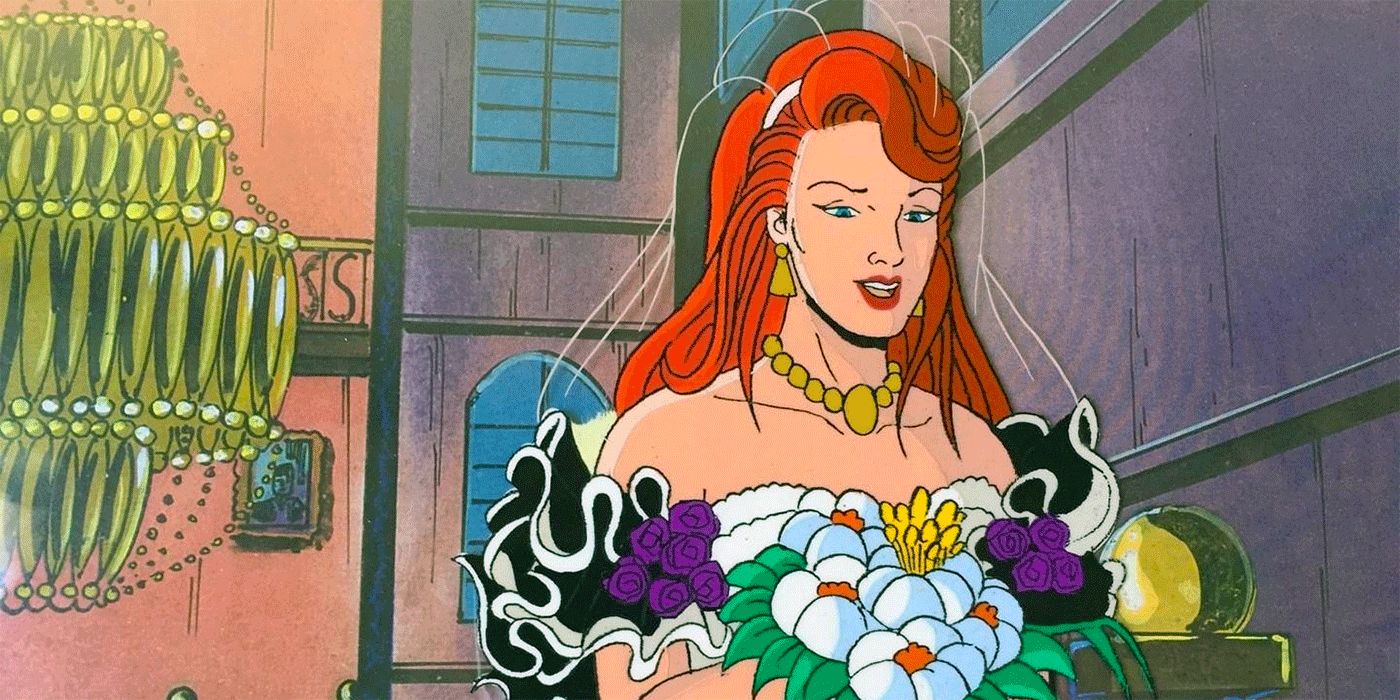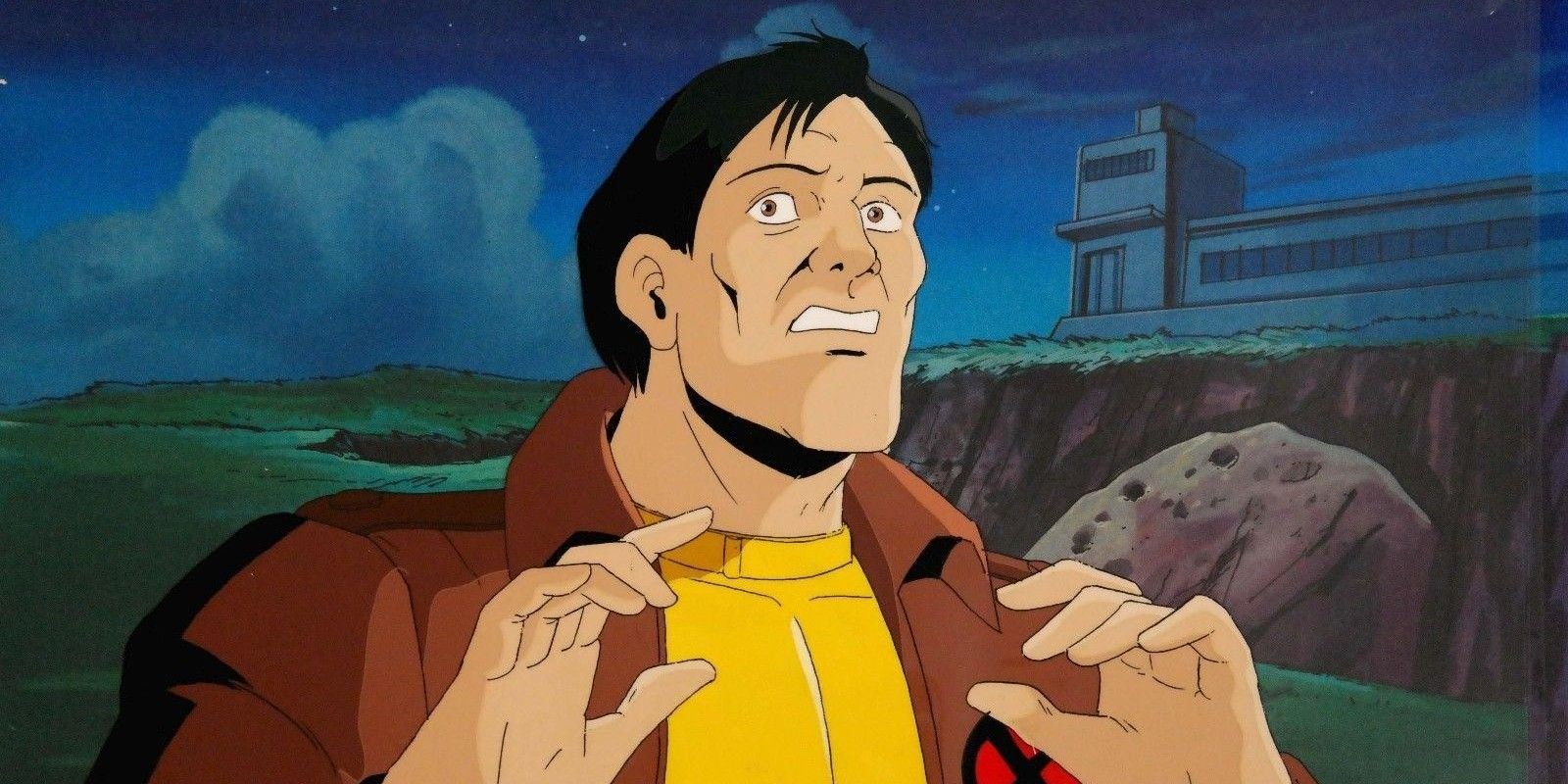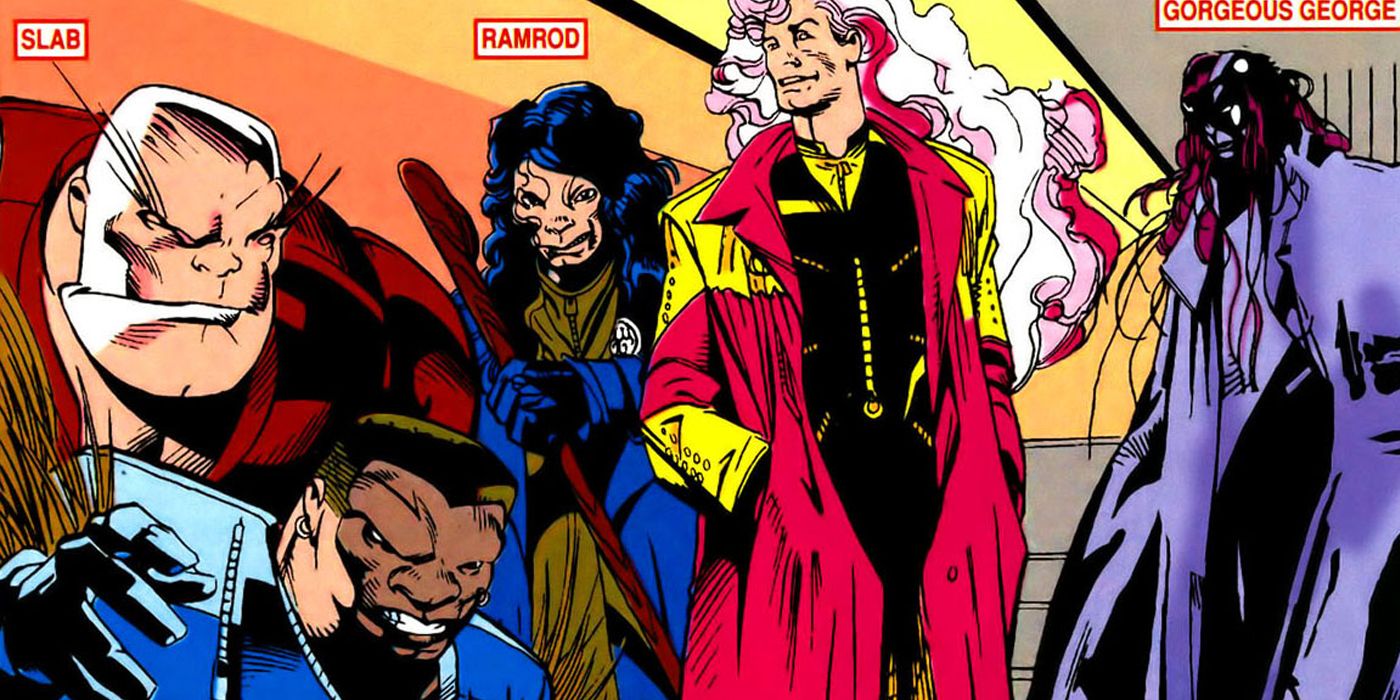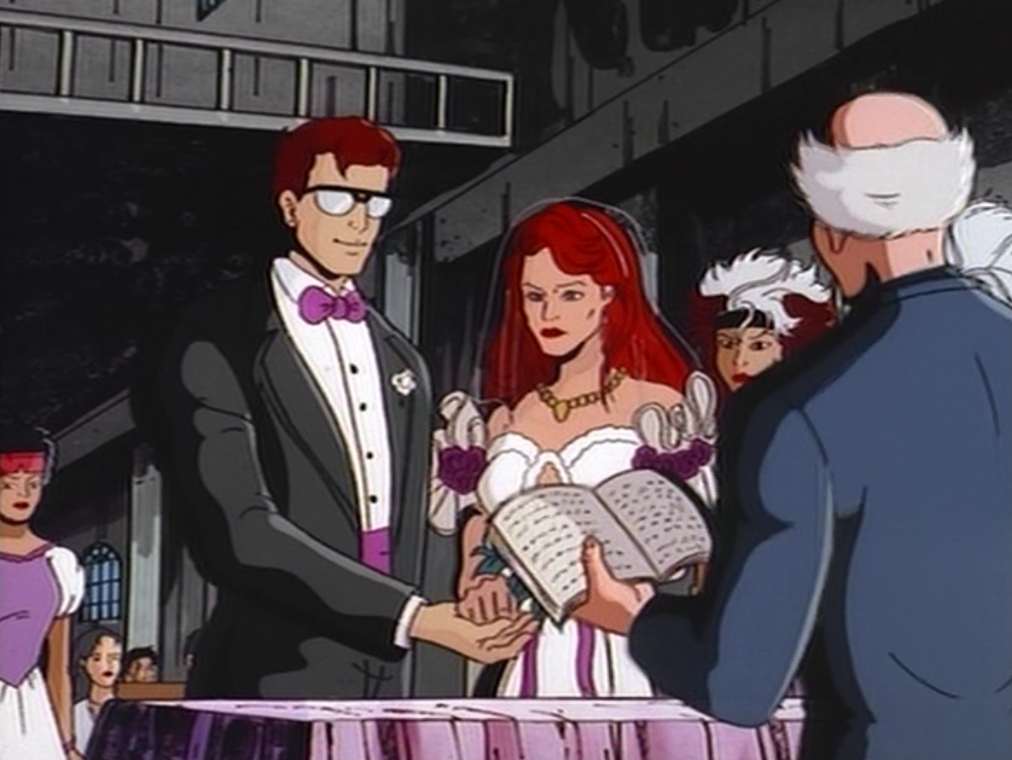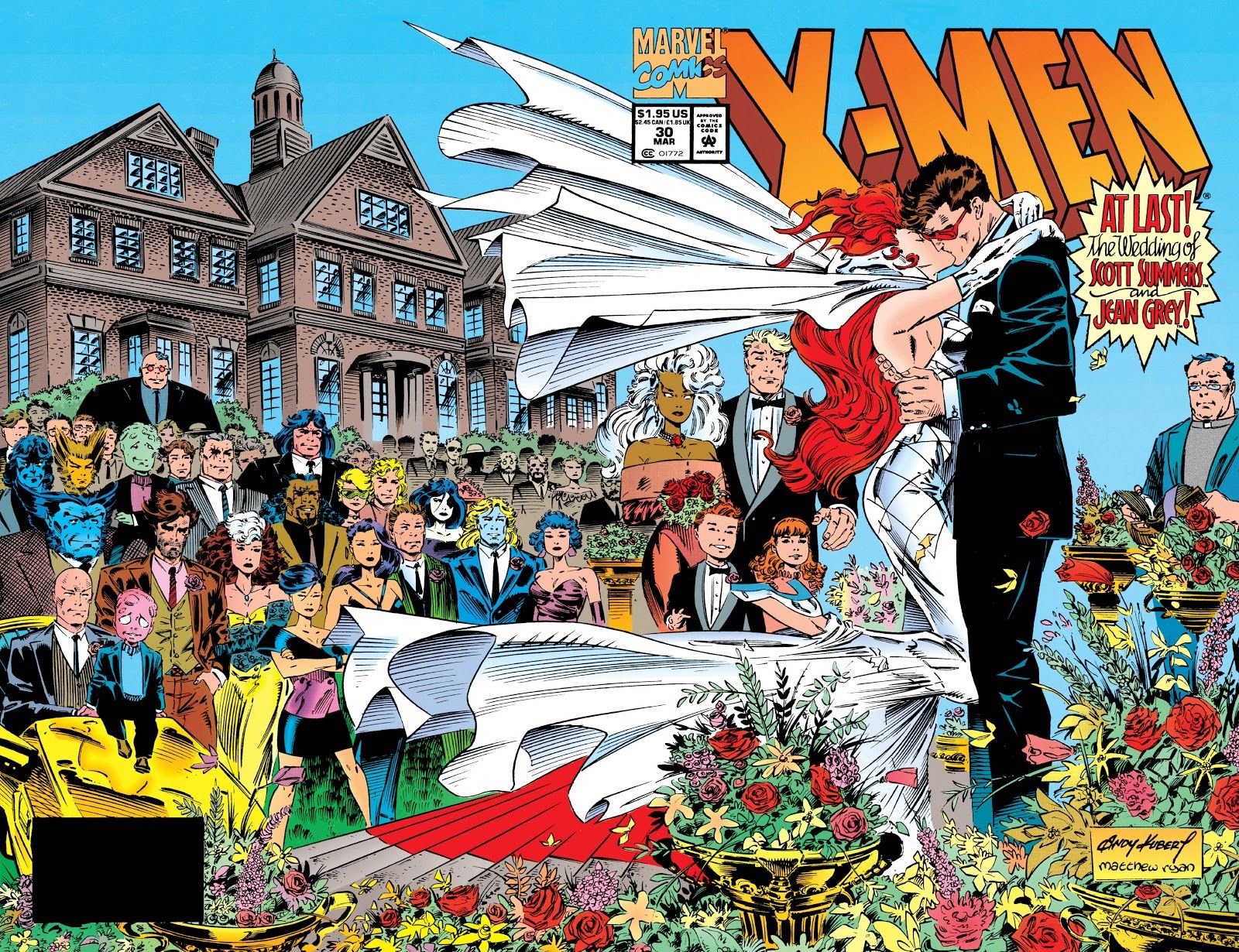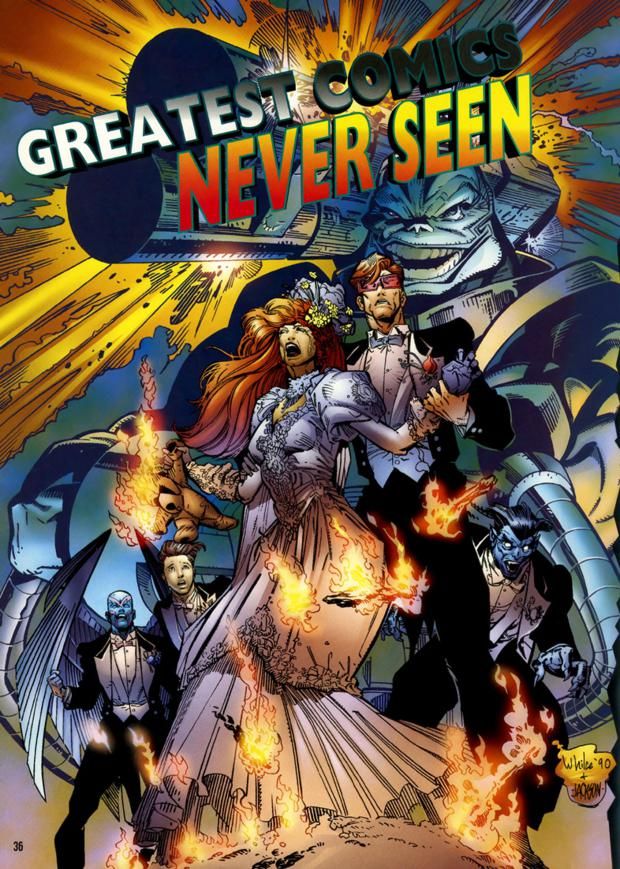Welcome to Adventure(s) Time's 151st installment, a look at animated heroes of the past. This week, the long-awaited wedding of X-Men sweethearts Cyclops and Jean Grey... which we technically saw in the cartoon, before the comic. And if you have any suggestions for the future, let me hear them. Just contact me on Twitter.
Following a hit debut season, X-Men: The Animated Series entered its second year as likely the most-anticipated show on Saturday-morning TV. The producers had no idea whether X-Men would make it past those initial 13 episodes when creating the first season, which meant the opening year covered a lot of X-lore in a short period. Entering Season 2, the precedent had been set that X-Men moved fast, introducing viewers to something new in each episode.
The Season 2 debut couldn't be just any ordinary episode: It had to live up to the expectations set by that first year. Appropriately, a decision was made to feature two significant events in the introductory two-parter. One would be the resurrection of Morph, the X-Man who sacrificed his life in the opening storyline. The second would be the long-awaited wedding of the team's main romantic couple, Cyclops and Jean Grey.
The Return of Morph & the Vows of Cyclops & Jean Grey
The season premiere, "Till Death Do Us Part (Part 1)," comes from writer Mark Edward Edens, and wastes little time in establishing what's happened in the year or so since we last visited this world. In the wake of President-Elect Robert Kelly reversing his stance on mutants, a hate group called the Friends of Humanity has formed, taking his old rhetoric to violent extremes. Meanwhile, Cyclops and Jean hold their wedding, unaware that shadowy villain Mr. Sinister has revived Morph, who's now posing as their minister.
This is part of Sinister's scheme to kidnap Cyclops and Jean, who are Very Important, for Very Vague Reasons, based on the source material's continuity at the time. Morph (or "Dark Morph," as he's called when under Sinister's thrall) causes more chaos when he uses his shape-changing powers to dismantle the team. Jubilee is sent to the Friends of Humanity’s headquarters, which leads to Storm getting shot by police during an anti-mutant protest. Gambit is tricked into kissing a napping Rogue, which leaves him unconscious. Beast (no longer relegated to occasional guest star status) is trapped within an active Danger Room session, and, most memorably, Xavier is duped into traveling all the way to Antarctica to rescue Magneto... who ends up arriving under the assumption that he should be saving Xavier.
Next week's follow-up, "Till Death Do Us Part (Part 2)," written by the other Edens brother, Michael Edens, maintains the debut's hectic energy. Each member escapes their predicament, and Morph's scheme is exposed by Wolverine's enhanced senses, enabling the team to soon track him to Sinister's secret island. The Nasty Boys debut as Sinister's team of flunkies, making perhaps a record-setting leap from the page to the screen, as the villains had only debuted a year earlier during Peter David and Larry Stroman's X-Factor run.
That particular era of X-Factor is known for David's irreverent sense of humor, and the Nasty Boys certainly fit in with that aesthetic. They're more absurd than menacing, but this actually works pretty well for the animated series. Sinister's more famous group of enforcers, the Marauders, already have a name likely too intense for network censors. Getting away with Sabretooth's teeth and claws was a challenge; having to deal with not only Sabretooth but an entire team that wields claws and blades and guns probably would've been a nightmare. Aside from matching more current continuity (the Marauders hadn't appeared in a few years, while the Nasty Boys were Sinister's latest crew in the comics), these villains serve their role well enough. Thankfully, they're played as straight opponents and not used to set up any campy jokes.
How X-Men Skirted Fox's Stance Against Multiple-Episode Arcs
Following the battle, the team is reunited, but we have setups for two ongoing story arcs. One has Wolverine chasing his friend, Morph, determined not to lose him to the darkness; the other has Professor Xavier and Magneto ambushed in Antarctica and soon finding their way into the Savage Land. Fans of both the comic and cartoon had to be thrilled. Morph, one of the show's breakout characters (despite appearing in merely two episodes; even Michael Jackson once named the mutant as his favorite superhero) is now back, and a long-established locale from the comics is receiving a season-long exploration.
This new status quo also creates a full season of the X-Men acting without their mentor's guidance, setting up numerous character-driven spotlight episodes. Showrunner Eric Lewald previously commented on the network's edict of abandoning these multi-episode arcs (following overseas animators turning in episodes out of order in the first year).
Producers skirted Fox's directive by animating the Xavier/Magneto sequences separately, before the episodes were complete, then plunking them into whichever episode was ready to air. In retrospect, the majority of Season 2 consists of done-in-one plots, yet the addition of those ongoing Xavier/Magneto sequences maintain the continuous feel of the debut season.
What's impressive about "Till Death Do Us Part" is how well it leans into what made the first season work so well. While the debut season established this as a dangerous reality for mutants to live in, the visual coding of these opening episodes indicate it's now an even darker world. Compare the pastel colors of the mall setting in the introductory pilot to the dingy locales seen in "Till Death Do Us Part." Wolverine nearly gets into a bar fight with a bigot, an innocent mutant is cornered in an alley by the Friends of Humanity, and even the Danger Room (now covered in shadows) starts to live up to its name. Rather than serving as a sterile locale for the X-Men to hone their powers, it's now a means for Wolverine to work out his aggression against Cyclops. Even the happy wedding has an undercurrent of tragedy, as Wolverine is so distressed over the ceremony he'd rather kill a robot duplicate of Cyclops in the Danger Room than attend.
The X-Men Cartoon May Have Inspired Scott & Jean's Comics Wedding
Having Cyclops and Jean exchange vows is another way the Season 2 premiere feels significant, even if we soon learn the wedding was invalid. For the average fan of that era, Cyclops and Jean are essentially the X-couple, so it would seem this event was inevitable. And yet, the animated series doesn't feature the official nuptials until 1996's episode "The End of Time." Only a few weeks after these episodes aired, however, Cyclops and Jean were engaged in 1993's Uncanny X-Men #308. A few months later, their wedding occurred in March 1994's X-Men #30.
Was the cartoon's wedding, as invalid as it might've been, the inspiration for the couple to marry in the source material? Signs point to yes. Dedicated X-fans know that, years before X-Men #30, Cyclops and Jean had a wedding scheduled in X-Factor, back in the days when that book starred the original X-Men team.
As Brian Cronin detailed years back, incoming plotter/penciler Whilce Portacio wanted his X-Factor run to open with a major event, and pitched Marvel on having Cyclops and Jean marry in a 1991 issue. He received the go-ahead from X-editor Bob Harras, and a wedding was scheduled for X-Factor #66. News leaked to the fan press, and Portacio and Jackson Guice produced a cover featuring the nuptials (printed years later in Marvel Vision #19's "Greatest Comics Never Seen" segment.)
However, Editor-in-Chief Tom DeFalco nixed the plan, feeling as if the wedding should occur in a main X-Men title, which would have Cyclops and Jean rejoining in a few months anyway. Shortly after the couple's X-Men reunion, numerous creative shifts occurred in the titles, in addition to a breakneck series of plots and interconnected crossovers that greatly reduced the number of "personal life" sequences. Cyclops and Jean were even placed on two separate divisions of the X-Men, meaning each was featured in a different X-Men title.
Still, Cyclops and Jean remained the team's most enduring couple, an element carried over into the new animated series. The show's first season ended with Cyclops proposing to Jean, and some intriguing ideas from producers on how to carry forward in Season Two. As Eric Lewald recently told me in an email:
When we got the Season Two greenlight in January, we pitched starting Season Two with a real wedding, then having Jean pregnant and giving birth to a "double mutant child" during the season. Bob [Harras] asked if we could please hold off. The idea of a Scott-Jean marriage/family absolutely appealed to them, but they hadn't worked out how they were going to go forward with this and so they didn't want our version popping up before they had their version ready for the books. That's why our wedding was then set up as a fraud committed by Mr. Sinister.
Aware of an impending wedding in the cartoon, Harras now had a reason to finally feature those long-anticipated nuptials in the comics. As for that "double mutant child," it's a shame he or she never materialized in the show (unless you count the time-traveling Cable, of course). Still, this might be fertile ground for the upcoming X-Men '97 to explore.

